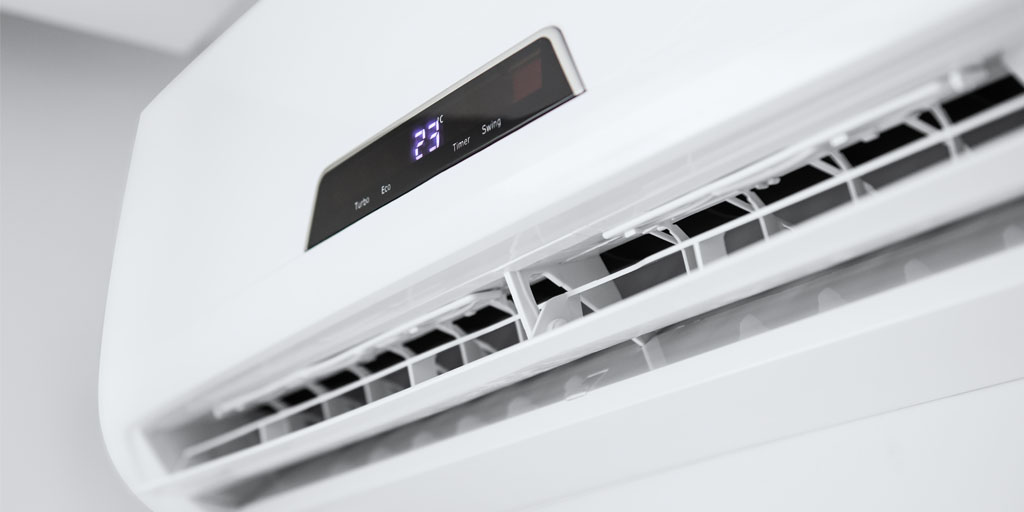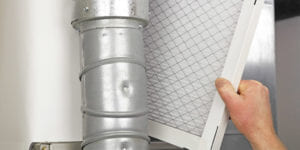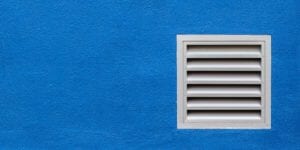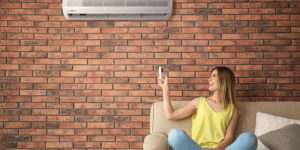Ductless Air Conditioners: Everything You Need to Know
There are several different ways you can install air conditioning in your home. Traditionally, central air conditioning (AC) has been the preferred choice of most homes. Ductless air conditioning, however, is beginning to change the market. Just like central AC, ductless systems comprise an outdoor unit that contains the condenser and compressor as well as an the indoor unit. The point of departure between ductless and central ACs is that the former has neither ducts nor a central air handler.
Instead, the indoor unit of each room is directly connected to the outdoor unit. One outdoor compressor unit can serve between one and eight rooms (though it may not be possible to power all rooms at the maximum setting simultaneously). It’s partly due to this versatility and scalability that ductless air conditioning is growing in popularity. This article looks offers a quick look at ductless air conditioning systems and highlights their advantages and disadvantages for those who might be considering a ductless system for their living space.
Indoor Unit Installation Options
There isn’t much variation in how or where you install the outdoor condenser/compressor portion of a ductless system. There are, however, four main options when it comes to the fitting of the indoor unit:
Wall Mounted:
Wall mounted indoor units are the most common ductless AC configuration, which is probably because they are the easiest and least costly to install. The vanes at the bottom of the indoor unit control the direction and speed of airflow.
Ceiling Recessed:
Also referred to as a cassette, ceiling recessed units are an excellent choice for large, open plan spaces. Unlike wall mounted units, they send air in all four directions simultaneously. Cassette units require at least 10 inches of space above the ceiling.
Floor Mounted:
Floor mounted units are installed on the floor and direct cool air upwards toward the ceiling. They are the easiest to install and maintain but also require the most frequent maintenance due to their location (as they are more prone to collecting dust).
Concealed:
This type of unit is basically a cross between a ductless system and standard central air conditioning. The unit sits above a ceiling or soffit then uses hidden ducts to circulate air in the room. Its main appeal is that it’s the least obtrusive alternative but this also means it’s the most difficult to maintain.
Size Matters
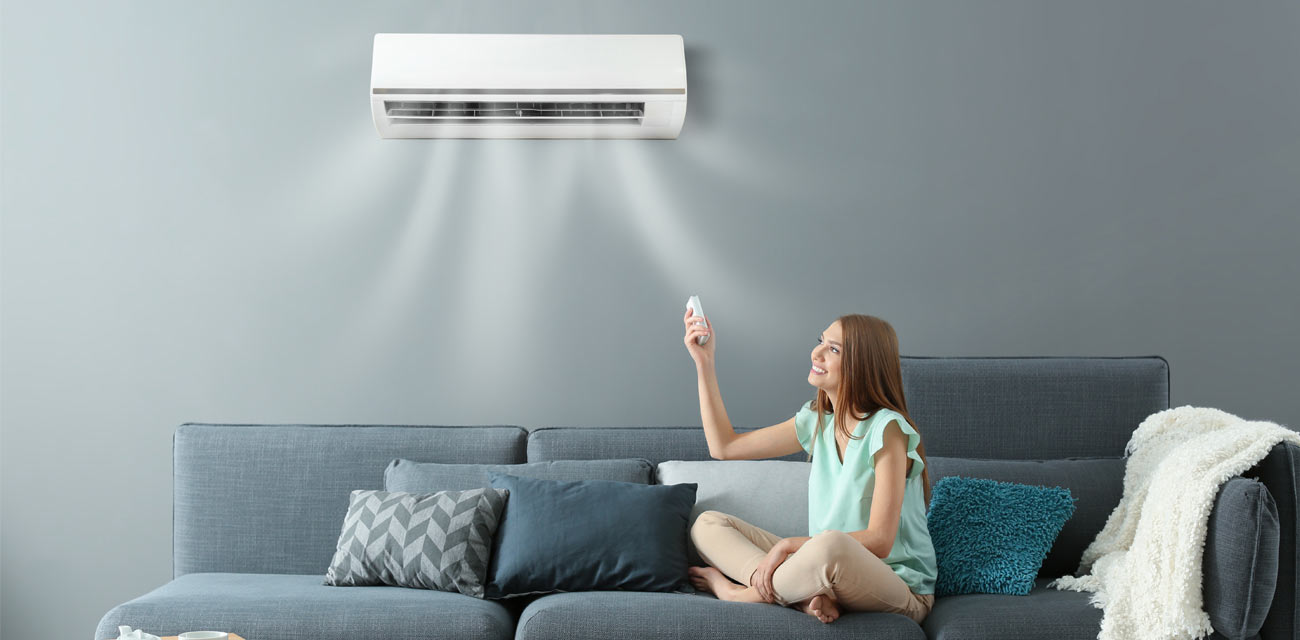
Ductless air conditioning comes in a wide range of sizes, so it’s important that you settle on a size that’s most appropriate for your needs. If your system’s capacity is too low to comfortably cool the room, it will have to work harder than it should and thereby increase your cost of operation. If the capacity is more than is necessary, then it will work less than it should and thus not deliver the best value.
Whereas ductless air conditioning equipment spec includes details on the space they can cool, it’s best to consult with a reputable HVAC contractor on just what capacity will be right for your home. Ideally, the contractor should perform a load calculation and assessment of the structure to determine the degree of cooling needed to keep rooms at your preferred temperature. The load assessment will look at the nature of the rooms and building material as well as local weather patterns.
Maintenance Procedures
No equipment can perform efficiently and smoothly if it doesn’t undergo regular maintenance. Your ductless air conditioning system’s performance will steadily deteriorate if maintenance is neglected. It’s best to perform maintenance at least once a year, though twice would be most ideal.
Unless you have the experience and equipment needed to do the maintenance yourself, you should contract a HVAC professional. Still, it’s important that you know what maintenance will involve. Here are three key tasks that must be a part of any ductless AC maintenance routine:
Air Filter Change
Air filters trap and eliminate dust and other particulates in the air. This prevents these tiny pollutants and pathogens from getting sucked into a room via the AC system. A dirty air filter can interfere with the smooth, unobstructed flow of air and can be much less efficient at capturing particulates.
In addition to annual or semiannual scheduled maintenance, check your air filters once a month and wash or replace them if they appear dirty. The frequency of changing your air filters is dependent on the general quality of air in your area. Places with cleaner air can get by with washing or replacing air filters quarterly.
Clean and Clear the Outdoor Unit
Shrubs, long grass, dust, mud, leaves, dead insects, and other objects on and around the outdoor unit can hamper airflow, decrease heat discharge, and thus degrade the ductless system’s overall function.
You should keep the outdoor unit clean and also should clear the area around it to ensure there are no obstructions. At the minimum, you should have two feet of clearance around the unit though five feet would be preferable.
Keep an Eye on the Refrigerant
Ductless systems are charged with refrigerant at the factory. Over time and with use, tiny leaks can slowly lower the refrigerant level. The system will not work as required if the refrigerant isn’t at the factory-specified level. Check for leaks, carry out repairs to rectify any leakage, and charge refrigerant as necessary.
Ductless AC Advantages
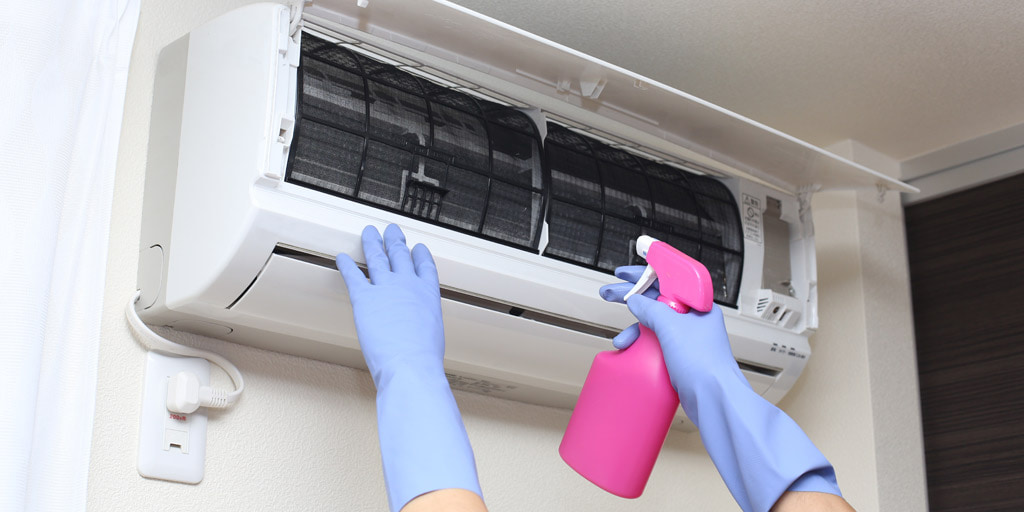
Thinking about going ductless but unsure of whether it’s the right air conditioning decision for your home? Here’s a look at the main advantages.
Less Noise
Since the ductless compressor is outdoors, the only noise you hear in the air conditioned room is the fan. This makes ductless systems significantly quieter than through-wall or window systems.
No Ducts
If you’ve lived in a house that’s at least a decade old and has central air conditioning, you’ve probably had to grapple with frustrating duct leaks caused by disconnections and cracks. In addition, AC ductwork usually passed through unconditioned spaces such as attics and basements where the temperature usually mirrors the outdoor weather.
Leaks and unconditioned spaces can degrade your air conditioning system’s efficiency by as much as 30 percent. This forces the HVAC equipment to work harder to counteract these losses, which can drive up maintenance costs. Ductless air conditioning means there are no ducts, so that’s two potential problems you can eliminate.
Better Air Quality
AC ducts are a notorious conduit for allergens, pollen, dust particles, combustion smoke, and other unwanted micro objects harmful to your respiratory health. This is because central air conditioning systems cannot prevent pollution and microbes from getting sucked indoors and are are notoriously difficult to clean.
Ductless air conditioning has advanced filtration cartridges that are much easier to replace or wash and thus do not demand the frequency of maintenance that traditional systems do. The filtration system captures the majority of problem particles thus preventing them from getting into rooms.
Quick Installation
Ductless systems can be installed and scaled with relative ease. Once the contractor mounts the indoor air handlers and the outdoor condenser/compressor, all that remains is to connect the two units with an encased bundle comprising wiring, plastic tube, and refrigerant coils. You only need a three-inch hole through the wall to relay this bundle.
The entire installation of a home’s ductless air conditioning can be completed within a day. By contrast, setting up central air conditioning from scratch is a laborious exercise especially because of the process of fixing new ducts. It can take days or weeks depending on the scale and complexity of the project.
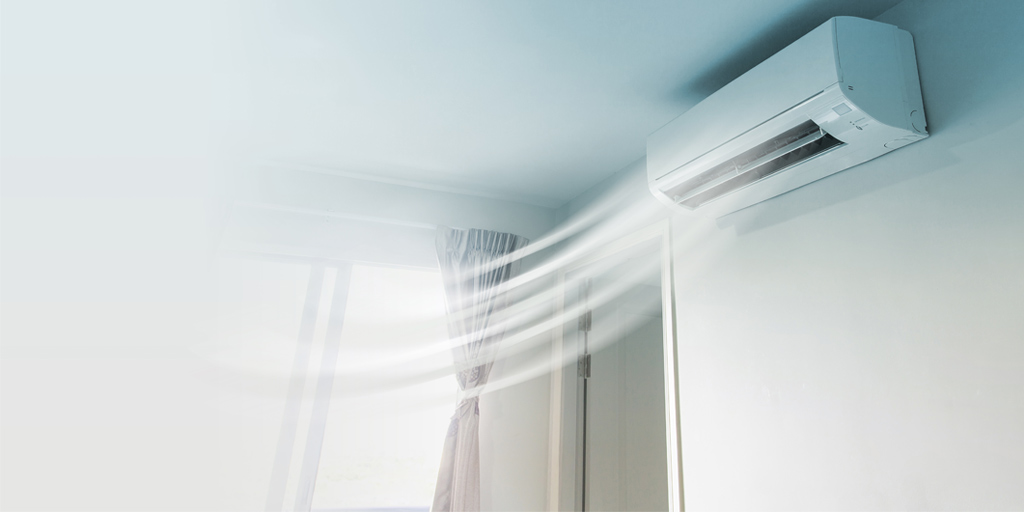
Precision Cooling
Central air conditioning cools the entire home, which might result in wasted energy. Ductless AC’s multi-split configuration is more efficient in this regard. Whereas the multiple indoor air handlers of a ductless system may all be connected to one outdoor condenser/compressor, each air handler is independently controlled. That way you can control a room’s temperature without impacting other rooms.
You can have different temperature zones within a home to avoid expending energy on rooms that aren’t occupied. You can also accommodate the different needs of different members of the household. For example, newborns and the elderly ordinarily need warmer room temperatures than everyone else.
Inverter Technology
Ductless air conditioning uses inverter technology to manipulate the speed of the compressor motor. Except for the more recent and high-end central air conditioning systems, most traditional HVACs do not utilize inverters. Inverters increases efficiency, extend the useful life of equipment, and eliminate wide variations in the load. Inverter-based HVACs are therefore quieter, require less maintenance, and have lower running costs.
Seasonal Energy Efficiency Ratio
Air conditioning is the largest contributor to home energy consumption, so higher energy efficiency is always better. Overall, ductless systems are more efficient than central air conditioning. The Seasonal Energy Efficiency Ratio (SEER) is the most reliable metric in this respect. Ductless systems’ SEER rating ranges between 18 to 30 while traditional HVACs vary between 13 and 20 SEER. This implies that with a ductless system you might see a savings between 30 to 40 percent.
Control Options
The settings of each indoor air handler can be manipulated using a wall monitor or hand-held remote. A number of more recent models have Wi-Fi capability so that they can be controlled using your smartphone or via the Internet. The most advanced ductless air conditioning systems can even monitor the real temperature of the room and thereby adjust the cooling settings accordingly.
Heating Option
Some ductless systems provide both cooling and heating. This dual use especially beneficial if a ductless system contains a heat pump as well. Heat pumps are famously energy efficient and consume 40 percent the energy that electrical resistance heating would require to realize the same temperature.
Ductless AC Disadvantages
Ductless air conditioning may have many merits over central air conditioning but, as with any product, it’s suitability will vary from one situation to the next.
Obsolescence of Current Ductwork
If your home is already outfitted with ductwork, you won’t be able to take advantage of it if you opt for a ductless air conditioning system. If you are looking to fit new air conditioning in a house that already has ducts installed and in fairly good condition, central air conditioning might be your most feasible and cost-effective option.
Contractor Scarcity
As a fairly new form of air conditioning especially in the US, there are fewer HVAC contractors with ductless installation and servicing experience. Existing contractors are also already deeply vested equipment-wise in central air conditioning and would therefore be less likely to recommend ductless systems. All this is changing, though, as ductless system manufacturers embark on an aggressive campaign to train technicians and sensitize the market on the benefits.
Final Thoughts
Choosing an air conditioning system should come down to the right balance of cost, comfort and long-term reliability. Before you make a decision, get in touch with a HVAC professional who can help you pick the most suitable solution for your need. You should also check for available rebates, as some states and counties offer such perks for ductless air conditioning especially if it includes heat pumps.

